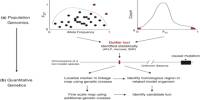The placental microbiome refers to the nonpathogenic, commensal bacteria that are thought to be present in a healthy human placenta, as opposed to the bacteria that cause infection and preterm birth in chorioamnionitis. Until recently, the healthy placenta was thought to be a sterile organ, but now genera and species living in the basal layer have been identified.
It should be noted that the evidence for a placental microbiome is debatable. Most studies supporting the existence of a placental microbiome lack appropriate experimental controls, and contamination has been found to be the most likely cause of reports of a placental microbiome.
The oral microbiome is more similar to the placental microbiome than the vaginal or rectal microbiomes. The placenta is an important organ during pregnancy because it connects the mother to the developing fetus. Some studies have found bacteria in the placenta, casting doubt on the long-held belief that the intrauterine environment is sterile. These findings have given rise to the possibility that the placenta has its own microbiome.
Research
The fact that germ-free animals can be routinely produced by sterile cesarean section provides compelling experimental support for the sterile womb hypothesis.
Future research may uncover a link between the microbiota of the female reproductive tract and pregnancy, conception, and birth. The relationship between oral microbiota and placental microbiota has been studied using animal studies. Mice inoculated with oral bacteria quickly demonstrated placental colonization.
History
Theodor Escherich began studying reproductive-associated microbiomes around 1885. He claimed that the newborn’s meconium was bacteria-free. This was interpreted as the uterine environment being sterile. Other studies collected meconium with sterile diapers. Bacteria could not be cultured from the samples. Bacteria were found and were directly proportional to the time between birth and the passage of meconium. A 1927 study discovered bacteria in the amniotic fluid of women who had been in labor for more than six hours.
















